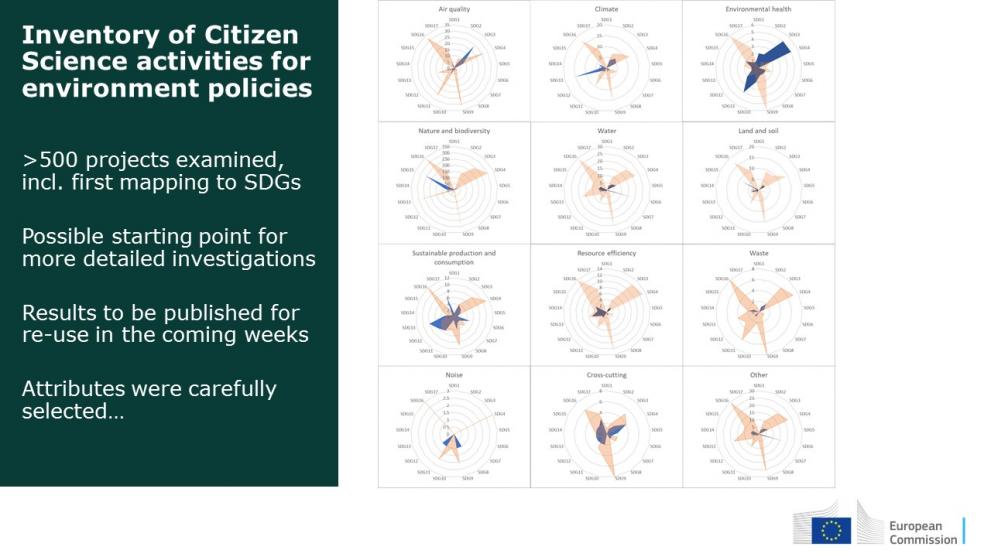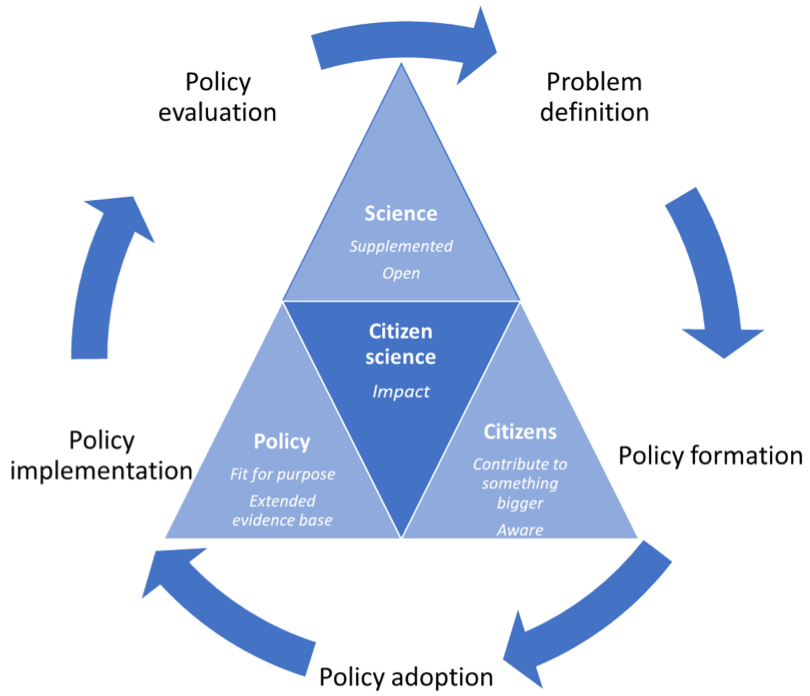
Citizen science is the non-professional involvement of volunteers in the scientific process, whether in the data collection phase or in other phases of the research.
It can be a powerful tool for environmental management that has the potential to inform an increasingly complex environmental policy landscape and to meet the growing demands from society for more participatory decision-making.
While there is growing interest from international bodies and national governments in citizen science, the evidence that it can successfully contribute to environmental policy development, implementation, evaluation or compliance remains scant.
Central to elucidating this question is a better understanding of the benefits delivered by citizen science, that is to determine to what extent these benefits can contribute to environmental policy, and to establish whether projects that provide policy support also co-benefit science and encourage meaningful citizen engagement.
EU-wide inventory
In order to get an evidence base of citizen science activities that can support environmental policies in the European Union (EU), the European Commission (DG ENV, with the support of DG JRC) contracted Bio Innovation Service (FR), in association with Fundacion Ibercivis (ES) and The Natural History Museum (UK), to perform a "Study on an inventory of citizen science activities for environmental policies" [1].
The first objective was to develop an inventory of citizen science projects relevant for environmental policy and assess how these projects contribute to the Sustainable Development Goals (SDGs) set by the United Nations (UN) General Assembly.
To this end, a desk-research and an EU-wide survey were used to identify 503 citizen science projects of relevance to environmental policy.
The second objective was to assess the conditions under which citizen science can best support environmental policy, through the selection and analysis of a sample of citizen science projects.
This was followed by an in-depth analysis of 45 projects along 94 project attributes. Subsequently, this analysis provided the foundation for making a series of recommendations to leverage the contribution of citizen science to environmental policy.

The study demonstrates the breadth of citizen science that can be of relevance to environmental policy.
Citizen science projects have been developed in all environmental fields and include all types of citizen science actions, from monitoring and occasional reporting to crowd-sourcing and passive sensing. However, citizen science activities focused on monitoring the state of natural resources, nature and biodiversity in particular, dominate the environmental citizen science landscape.
In contrast, citizen science projects related to the efficient use of resources only represent 7% of the projects in the inventory.
Environmental citizen science projects already contribute to a diversity of SDGs, in particular goals related to Health and well-being (SDG 3), climate mitigation and adaptation (SDG 13), terrestrial nature conservation (SDG 15) and global partnership for sustainable development (SDG 17).
The in-depth analysis of selected projects shows that a diverse continuum of approaches can be used to achieve policy-relevance.
While most of the analysed projects converge on the scientific dimension holding high standards to training and data validation, there are limitations in terms of data accessibility and interoperability.
In contrast, projects differ more widely on their approaches to citizen engagement, and notably on the importance of social media.
Policy linkages seem mostly to be considered either in the project design, or to be a spinoff resulting from the large amounts of data compiled by citizen science projects that cover broad spatio-temporal scales.
Study outcome
Three salient features were found:
- Government support, not only in the funding, but also through active participation in the design and implementation of the project appears to be a key factor for the successful uptake of citizen science in environmental policy.
- When there is easy engagement process for the citizens, that is, with projects requiring limited efforts and a priori skills, this facilitates their policy uptake.
- Scientific aspects on the other hand did not appear to affect the policy uptake of the analysed projects, but they were a strong determinant of how well the project could serve policy: projects with high scientific standards and endorsed by scientists served more phases of the environmental policy cycle.
In conclusion, this study demonstrates that citizen science has the potential to be a cost-effective way to contribute to policy and highlights the importance of fostering a diversity of citizen science activities and their innovativeness.
It is important, however, not to erode the support and trust of citizens in the environmental policy process, which can be long and complex.
All the data used in preparing the study is publicly available at [2]. The data includes both the citizen science project inventory and the in-depth analysis data that resulted from the study.
The inventory will be updated on a regular basis, considering possible additions from a survey that is also provided in [2].
References
Related Content
Data set: An inventory of citizen science activities for environmental policies
Details
- Publication date
- 18 December 2018
